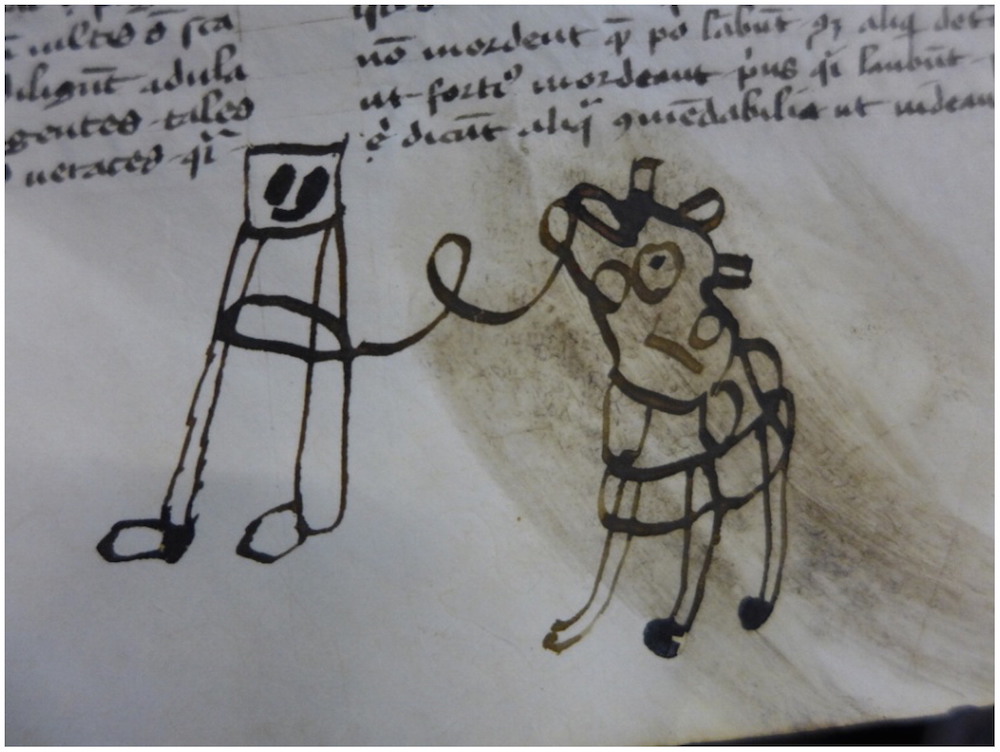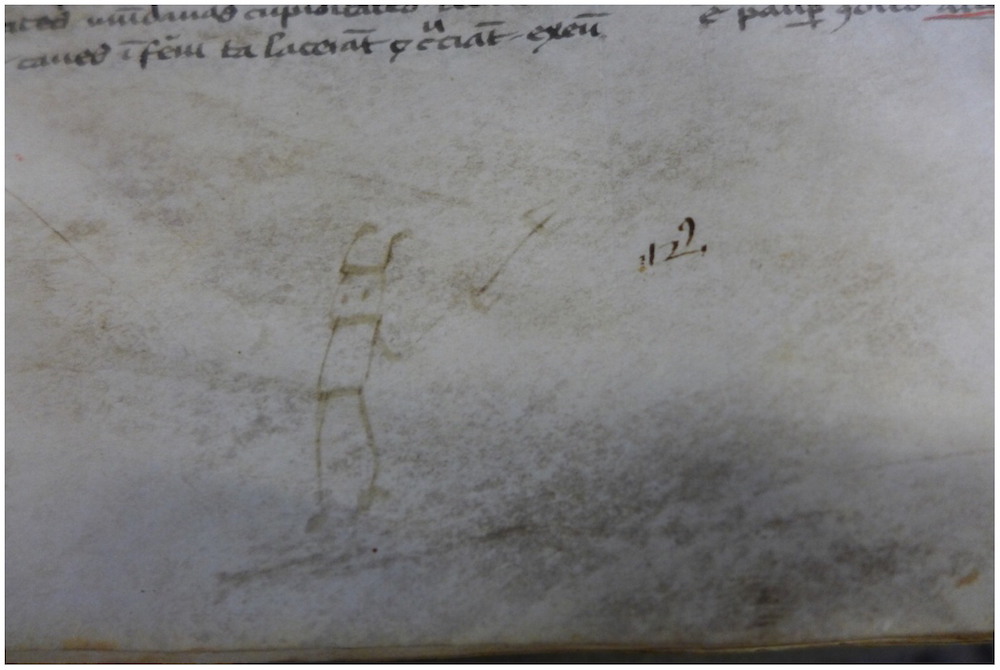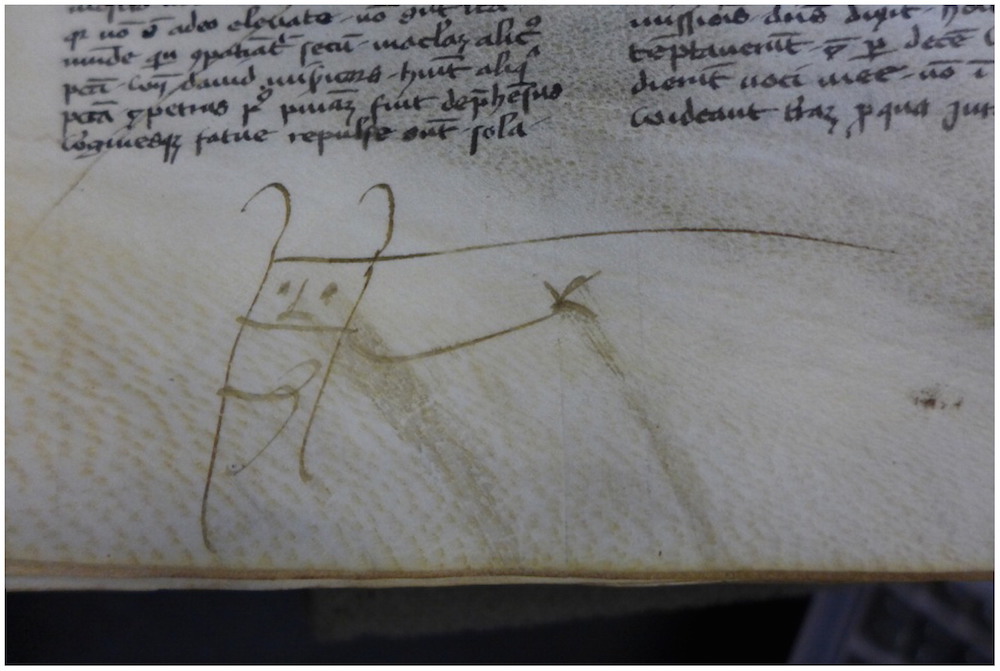Children's Doodles Found in Margins of Medieval Manuscript

The margins of a medieval manuscript from a convent in Naples, Italy, are decorated with doodles of what are apparently devils, a farm animal and a person that were likely drawn by children, a new study finds.
Children probably scribbled these doodles on the 14th-century manuscript a few hundred years after the book was made, said the study’s author, Deborah Thorpe, a research fellow at the Centre for Chronic Diseases and Disorders at the University of York in the United Kingdom.
The drawings are a rather serendipitous find; Thorpe discovered them by chance while conducting research for another project. [In Photos: Medieval Manuscript Reveals Ghostly Faces]
"I was looking through a database of medieval manuscripts online, and I found images of these beautiful doodles in the margins, and to me they looked like they were done by children," Thorpe said in a statement. "I thought, 'This is really interesting, has anyone written anything about this?'"
It's not uncommon to find weird illustrations lurking in the margins of medieval manuscripts. Other historians have found drawings of tumbling animals and even defecating monks, Thorpe said. Sometimes, human-like figures, often drawn with an "unsophisticated, child-like quality," are found, and experts speculate that scribes or readers made these doodles to escape boredom, she wrote in the study.
But most of these manuscript drawings, though simple, were likely drawn by adults, Thorpe said. She had a hunch that the newfound doodles were sketched by children, and enlisted the aid of child psychologists to help her determine if that was the case.
Doodle detectives
The drawings — three in all — include two figures that look like devils and another of a person with a horse or a cow.
Get the world’s most fascinating discoveries delivered straight to your inbox.
When child psychologists examined the illustrations, they said several clues suggested that children ages 4 to 6 years old probably drew them.
"The psychologists came up with a set of criteria for why we could say they were the work of children, for example, the elongated shapes, the really long legs and the lack of a torso, the focus on the head," Thorpe said. "These are the things that are most important to children. If you compare them with the doodles that children make today, they are really similar. It was just a case of detective work, really."
In fact, Thorpe's work marks the first time that children's drawings have been identified in a medieval manuscript using a set of psychological criteria, she said.
"It is striking evidence of interactions between children and books in the medieval period," Thorpe said. "It shows how children back then enjoyed playing and learning, expressing themselves and allowing their imagination to take off, just like today's children."
The study was published online June 29 in the journal Cogent Arts and Humanities.
Original article on Live Science.

Laura is the managing editor at Live Science. She also runs the archaeology section and the Life's Little Mysteries series. Her work has appeared in The New York Times, Scholastic, Popular Science and Spectrum, a site on autism research. She has won multiple awards from the Society of Professional Journalists and the Washington Newspaper Publishers Association for her reporting at a weekly newspaper near Seattle. Laura holds a bachelor's degree in English literature and psychology from Washington University in St. Louis and a master's degree in science writing from NYU.




